Our Latest Research...
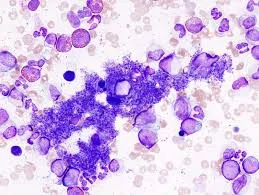
BioAcoustics & Essential Thrombocythemia: Can Sound Support Blood Health?
Understanding Essential Thrombocythemia (ET) Essential Thrombocythemia (ET) is a rare chronic blood disorder that belongs to a group of conditions called myeloproliferative neoplasms (MPNs). In ET, the bone marrow — the spongy tissue inside our bones that produces blood cells — creates too many platelets. Platelets are the small, disc-shaped cells that help blood clot when you ha
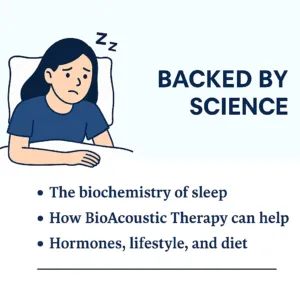
Why Can’t I Sleep? A BioAcoustic Solution Backed by Science
Why Can’t I Sleep? A BioAcoustic Solution Backed by Science Sleepless Nights Aren’t Just “In Your Head” If you’re lying awake at 2:00 AM with racing thoughts, restless legs, or just plain exhaustion that refuses to give way to sleep — you’re not alone. Chronic insomnia affects 1 in 3 adults at some point in their lives, and for many,
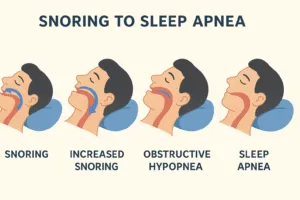
From Snoring to Sleep Apnea: A Silent Progression You Shouldn’t Ignore
From Snoring to Sleep Apnea: Understanding the Progression and Unlocking Natural Relief Through Bioacoustic Therapy Snoring might seem like a harmless nighttime nuisance, but it can be your body’s first audible cry for help. Often dismissed or laughed off, snoring is frequently the gateway symptom to a more serious condition: obstructive sleep apnea (OSA).

Living With a Partner Who Has Sleep Apnea: A Natural Solution That Actually Helped
I used to think snoring was just a funny little quirk—something you joke about in the morning over coffee, not something that could take a real toll on your relationship, your health, and your peace of mind. But night after night, as my partner’s snoring
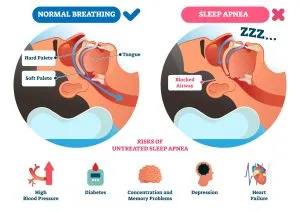
Sleep Apnea Resolved with Sound Frequencies
Sleep apnea is a common sleep disorder characterized by repeated interruptions in breathing during sleep. These interruptions can last from a few seconds to minutes and may occur 30 times or more per hour. The condition can lead to decreased oxygen levels in the blood,

Menopause, the Nervous System, and Sound: Resetting Balance Through BioAcoustic Frequencies
Menopause is more than a shift in hormone levels. It’s a full-body experience that ripples through every system, especially the nervous system. For many women, menopause is marked not just by hot flashes or irregular periods, but

Why ADHD Isn’t Just in the Brain – And How Sound Might Be the Missing Link
When most people think of ADHD (Attention-Deficit/Hyperactivity Disorder), they imagine a restless child who can’t sit still or an adult who struggles to meet deadlines. While these symptoms are certainly part of the picture, the full story of ADHD runs much deeper.

Menopause Relief Through Sound: How BioAcoustics Is Changing the Game
Menopause marks a significant transition in a woman’s life. While it is a natural biological process, its symptoms can deeply impact quality of life. From hot flashes and night sweats to mood fluctuations and brain fog, the hormonal
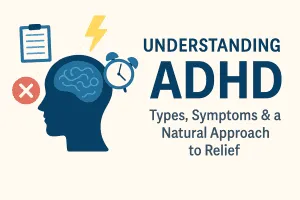
Understanding ADHD: Types, Symptoms & a Natural Approach to Relief
Attention-Deficit/Hyperactivity Disorder (ADHD) is one of the most commonly diagnosed neurodevelopmental conditions, affecting millions of children and adults worldwide. Often misunderstood and misdiagnosed, ADHD manifests in different
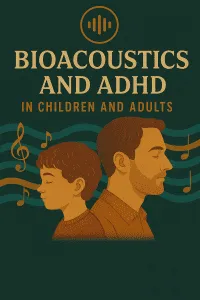
Human BioAcoustics and Its Impact on ADHD Treatment: Can It Work in a Week?
In the world of neuroscience and psychological health, Attention Deficit Hyperactivity Disorder (ADHD) stands as one of the most common neurodevelopmental disorders. Affecting both children and adults, ADHD is characterized by symptoms such as

Covid Effects On Early Menopause
The relationship between COVID-19 and menopause is an emerging area of research that highlights how the viral infection, or any viral infection may exacerbate or trigger menopausal symptoms in women. As women navigate the complexities of menopause, they may find that
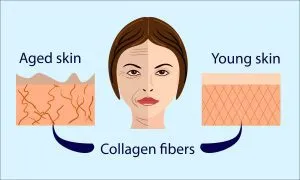
Why Do We Need Collagen?
What Is Collagen—and Why Do We Need It? Collagen is a structural protein responsible for healthy joints and skin elasticity (stretchiness). It’s found in bones, muscles, skin, tendons, ligaments, blood vessels, and more—making up roughly three quarters of your skin and about one-third of the protein in your body.
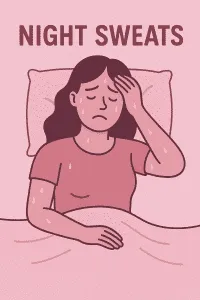
Heat flashes, Night sweats and Menopause
Understanding Menopause – A Natural Transition in a Woman’s Life Menopause marks one of the most significant biological transitions in a woman’s life. It is the natural cessation of menstrual cycles, officially diagnosed after twelve consecutive months without a period. For most women, menopause occurs between

How Vitamin B Impacts Emotions
The B vitamins are a class of essential water-soluble vitamins and key nutrients that play important roles in cell metabolism and body function. Having a significant effect on our wellbeing, they help convert our food into fuel, helping us to stay energized throughout the day. B vitamins help make the immune system
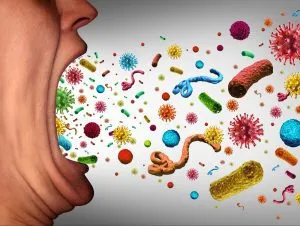
Decloaking Pathogens With Low Frequency Sound
What can your voice really tell you? The frequencies of the voice can be Predictive, Diagnostic, Prescriptive and Curative. The vocal print can identify toxins, pathogens, supplements that are too high or low in level, and muscles that are weak or strong.
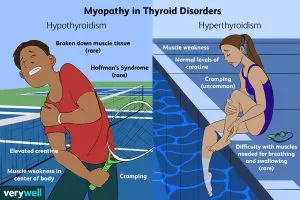
Thryoid dysfunction or Fibromyalgia?
Hypothyroid Myopathy vs. Fibromyalgia: Understanding the Differences When considering chronic, unexplained aches and pains in muscles, tendons, or joints, it is essential to differentiate between thyroid dysfunction and fibromyalgia. The symptoms of these conditions can overlap significantly, leading to

The Quercetin Paradox – Toxic effects
Paracelsus was a toxicologist who lived and worked in the 1500c. He was well known for his claim that dose is what determines whether a substance is a medicine or a poison. Many people today also don’t realise that most Vitamins, Minerals, Cell Salts, Amino acids, Antioxidents and
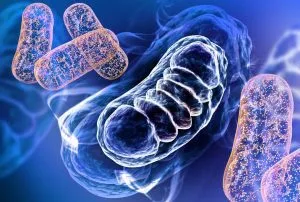
The Key To Energy Enhancement
The Key Energy Enhancement Isn’t Sugar and Stimulants, its optimizing your Mitochondria. What is the main function of mitochondria? Mitochondria are the power system of our cells. They are the absolutely most critical physiological system involved in our energy levels. If you are feeling fatigued, that is
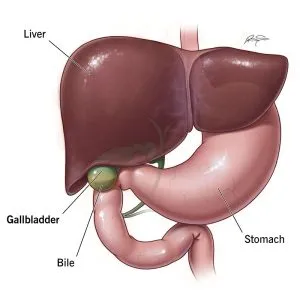
Gallbladder Distress
The Gallbladder is a a small, pear-shaped organ located under the liver. The gallbladder creates bile which helps the digestion of oils and fatty foods. If fats and cholesterol are not properly digested, gallstones which are hardened deposits of digestive fluid that can form in the gallbladder. Humans can

Endrometriosis
Endometriosis is a disorder in which tissue similar to the lining of the uterus grows outside the uterus. It can cause severe pain in the pelvis and make it harder to get pregnant. Symptoms of Endometriosis: Endometriosis often presents with various symptoms, including:

Thyroid Conditions
Many health issues find thyroid function at their foundation. Essential to energy production, reproductive issues, immune stability, PMS, metabolism, aging, hormone use and stress tolerance are all related to thyroid function. (Source: Soundhealthportal.com) A balanced Thyroid gland is
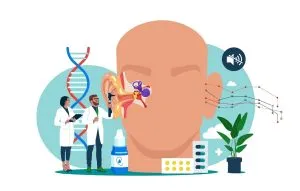
Tinnitus
What is tinnitus? Tinnitus is the perception of sound that does not have an external source, meaning others cannot hear it. It is commonly described as a ringing sound but can also be perceived as roaring or buzzing. Tinnitus affects 10 to 25% of

Autistic Spectrum
Autism Spectrum Disorder (ASD) is a neurological and developmental disorder that affects communication, interaction, learning, and behavior. According to the Diagnostic and Statistical Manual of Mental Disorders (DSM-5), people with ASD often exhibit:
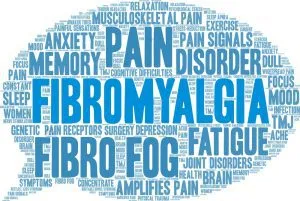
Fibromyalgia
Considered by many to be a “non-disease”, the debilitating effects of Fibromyalgia continue to frustrate the millions who suffer from long-term, body wide pain and tenderness of joints, muscles, tendons, and other soft tissues. It is very likely that Fibromyalgia results from

Dyslexia
What is Dyslexia? Dyslexia is thought to be a learning disability that affects how the brain processes written language. Individuals with dyslexia struggle with reading, spelling, writing, and sometimes even math. Many sources claim that is not a problem of intelligence but
Real Results with BioAcoustics

ADHD – Improved Focus
An 11-year-old experienced calmer behavior and longer attention span after daily tone sessions. Parents noticed fewer classroom disruptions and better sleep quality. Follow-up voiceprints showed stronger neurological rhythm alignment supporting focus and regulation.

Thyroid – Energy Restored
A 38-year-old reported improved energy, reduced brain fog, and more stable weight after 6 weeks of frequency balancing alongside nutritional support. Voiceprints indicated better metabolic stability, reflecting more efficient thyroid regulation and overall vitality.

Menopause – Symptom Relief
A 52-year-old experienced a significant reduction in hot flashes, night sweats, and mood swings. Personalized tone therapy helped restore balance in hormonal rhythms. By week eight, sleep and emotional stability had improved noticeably, validated by follow-up scans.

Autistic Spectrum – Calmer Rhythm
A child on the spectrum showed improved tolerance to sensory input and smoother speech rhythm after gentle daily frequency sessions. Caregivers reported calmer transitions and greater ease in communication, supported by regular monitoring and adjusted sound protocols.

Fibromyalgia – Comfort & Sleep
A 46-year-old reported fewer flare-ups, reduced pain intensity, and improved sleep. A tailored plan using relaxation-focused frequencies helped calm the nervous system. Voiceprints confirmed more coherent stress patterns and greater recovery between sessions over 2 months.

Dyslexia – Reading Fluency
A 10-year-old showed smoother reading pace, fewer reversals, and stronger memory for symbols after sound-based training. Combining frequency entrainment with tutoring improved concentration and retention. Parents noted greater confidence in reading aloud in class by month two.

Gall Bladder – Digestive Comfort
An adult reported gentler digestion and less post-meal discomfort with targeted tones supporting gall bladder function. Daily listening helped ease abdominal tension. After six weeks, energy after eating and nutrient absorption markers improved, complementing clinical follow-up care.


